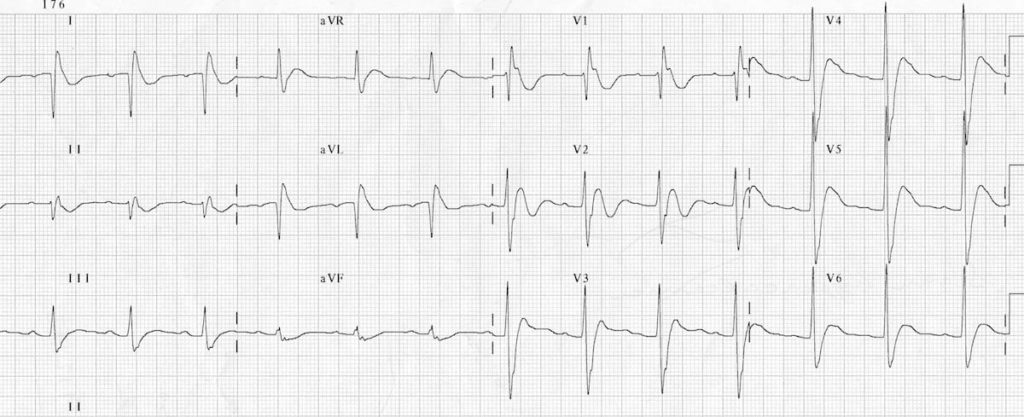Hypercalcaemia
ECG Changes in Hypercalcaemia
- The main ECG abnormality seen with hypercalcaemia is shortening of the QT interval
- In severe hypercalcaemia, Osborn waves (J waves) may be seen
- Ventricular irritability and VF arrest has been reported with extreme hypercalcaemia
Hypercalcaemia Overview
- Normal serum corrected calcium = 2.1 – 2.6 mmol/L
- Mild hypercalcaemia = 2.7 – 2.9 mmol/L
- Moderate hypercalcaemia = 3.0 – 3.4 mmol/L
- Severe hypercalcaemia = greater than 3.4 mmol/L
Causes of Hypercalcaemia
- Hyperparathyroidism (primary and tertiary)
- Myeloma
- Bony metastases
- Paraneoplastic syndromes
- Milk-alkali syndrome
- Sarcoidosis
- Excess vitamin D (e.g. iatrogenic)
ECG Examples
Example 1
Hypercalcaemia
- Osborn waves in severe hypercalcaemia (4.1 mmol/L)
- Image reproduced from Otero & Lenihan [PMC101092]
Example 2
- Hypercalcaemia causing marked shortening of the QT interval (260ms).
- Image originally featured in Kyuhyun (K.) Wang’s excellent Atlas of Electrocardiography
Example 3
This is the ECG of a 41-year old man with a parathyroid adenoma who presented to ED critically unwell with a serum calcium of 6.1 mmol/L. He suffered a VF arrest not long after this ECG was taken. The ECG shows:
- Bizarre-looking QRS complexes
- Very short QT interval
- J waves = notching of the terminal QRS, best seen in lead V1
Many thanks to Dr James Hayes, FACEM, for this fantastic ECG!




No comments:
Post a Comment